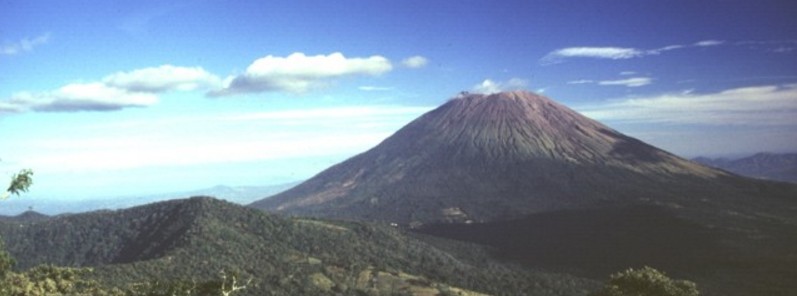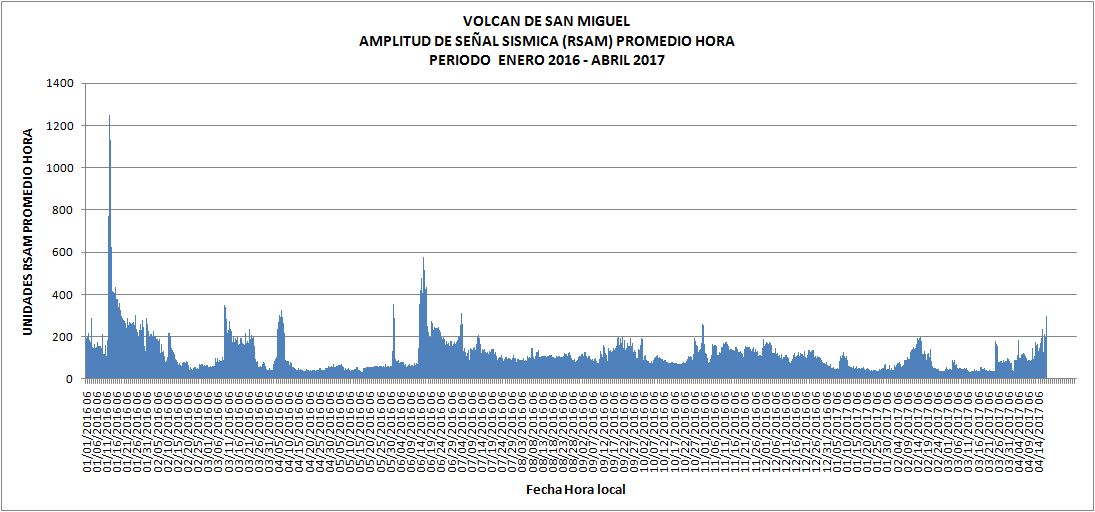Sudden increase in seismic activity under San Miguel volcano, El Salvador

El Salvador authorities are reporting a sudden increase in seismic activity under San Miguel volcano on Tuesday, April 18, 2017. The last major eruptive phase of this volcano started on December 29, 2013, and ended in August 2014 (VEI 2).
In a special report released 20:30 local time on April 17, 2017 (02:00 UTC on April 18), MARN reported a sudden increase in internal seismic vibration was recorded under San Miguel volcano, also known as Chaparrastique, between 00:20 and 00:30 UTC on April 18. The number of earthquakes reached 356 in a period of 10 minutes.

Credit: MARN
"These variations are associated with the movement of magma inside the crater, typical situation in an active volcano," the Ministry said.
Given the behavior recorded in the past couple of days, the emission of gasses and/or magma from the central crater or from the flanks of the volcano can be expected.
Authorities are urging the population to stay away from the volcano.
An explosive eruption at San Miguel that began at 10:30 local time on December 29, 2013, prompted an evacuation of 1 400 – 2 600 people. A dense ash plume rose from the crater and eventually reached an altitude of 9.7 km (32 000 feet) above sea level. It was the first significant eruption at the volcano since 2001 (VEI 1).
Geological summary
The symmetrical cone of San Miguel volcano, one of the most active in El Salvador, rises from near sea level to form one of the country's most prominent landmarks. The unvegetated summit of the 2130-m-high volcano rises above slopes draped with coffee plantations. A broad, deep crater complex that has been frequently modified by historical eruptions (recorded since the early 16th century) caps the truncated summit of the towering volcano, which is also known locally as Chaparrastique.
Radial fissures on the flanks of the basaltic-andesitic volcano have fed a series of historical lava flows, including several erupted during the 17th-19th centuries that reached beyond the base of the volcano on the north, NE, and SE sides. The SE-flank lava flows are the largest and form broad, sparsely vegetated lava fields crossed by highways and a railroad skirting the base of the volcano. The location of flank vents has migrated higher on the edifice during historical time, and the most recent activity has consisted of minor ash eruptions from the summit crater (GVP).
Featured image credit: Carlos Pullinger, 1996 (Servicio Nacional de Estudios Territoriales, El Salvador).

Commenting rules and guidelines
We value the thoughts and opinions of our readers and welcome healthy discussions on our website. In order to maintain a respectful and positive community, we ask that all commenters follow these rules.